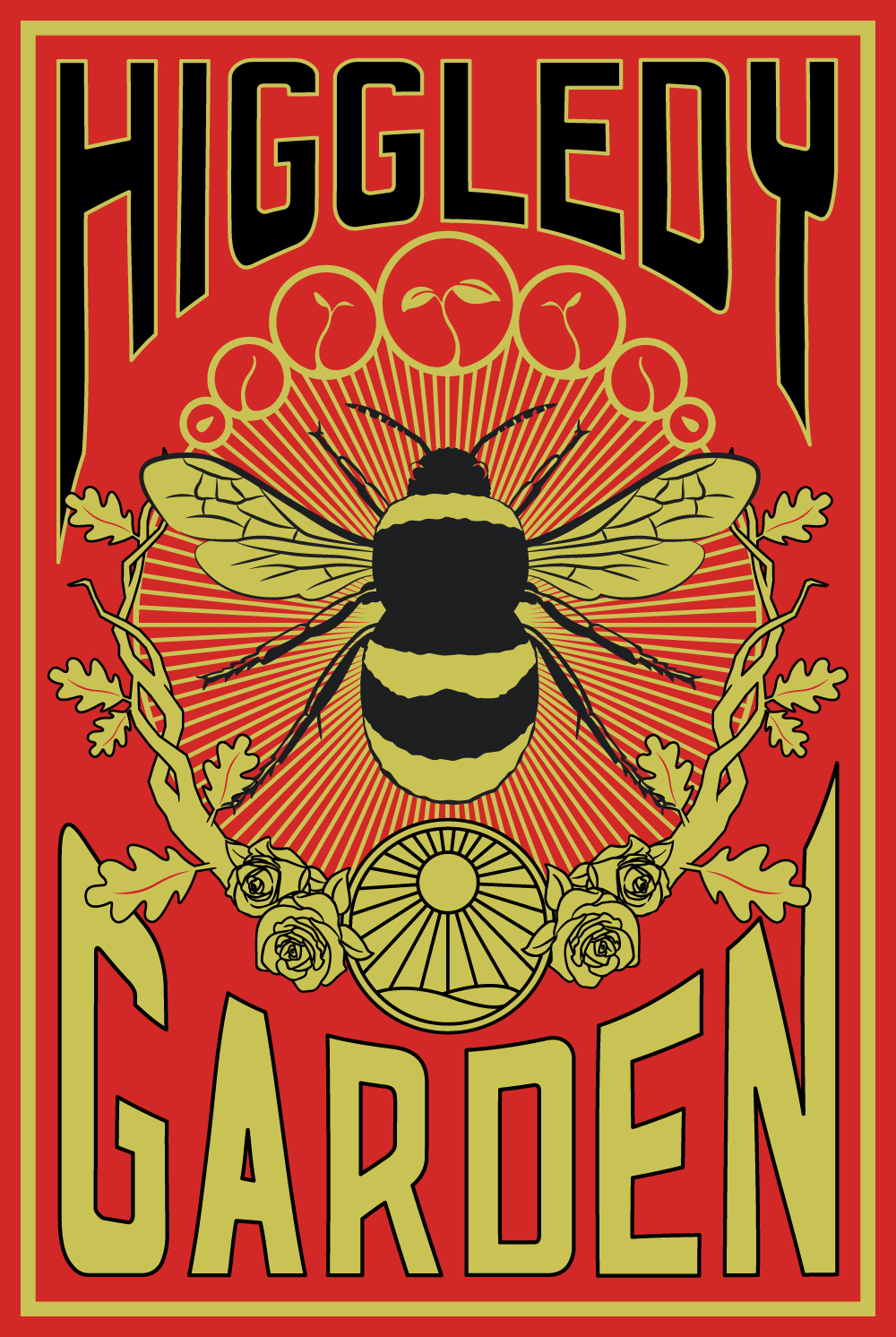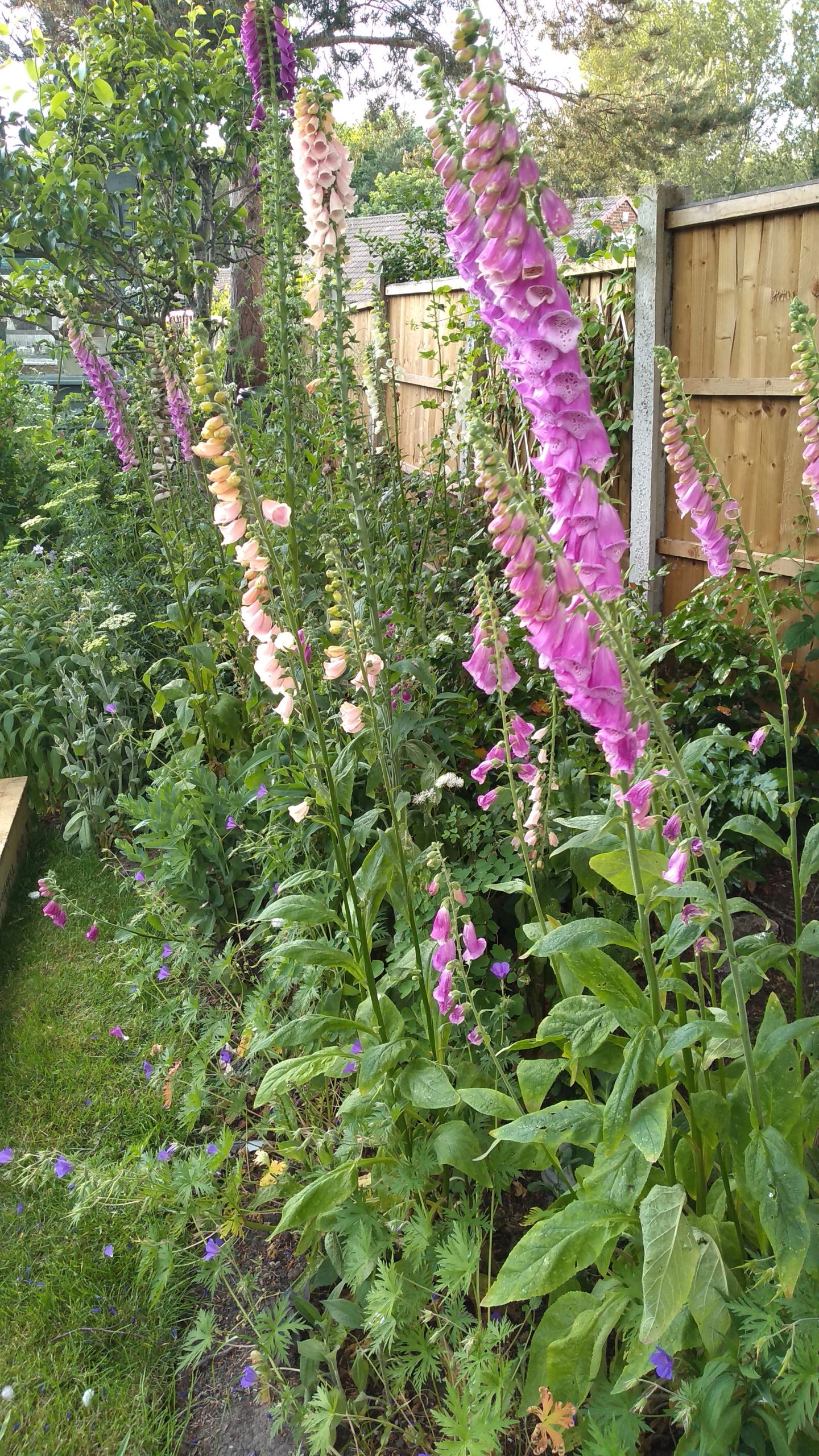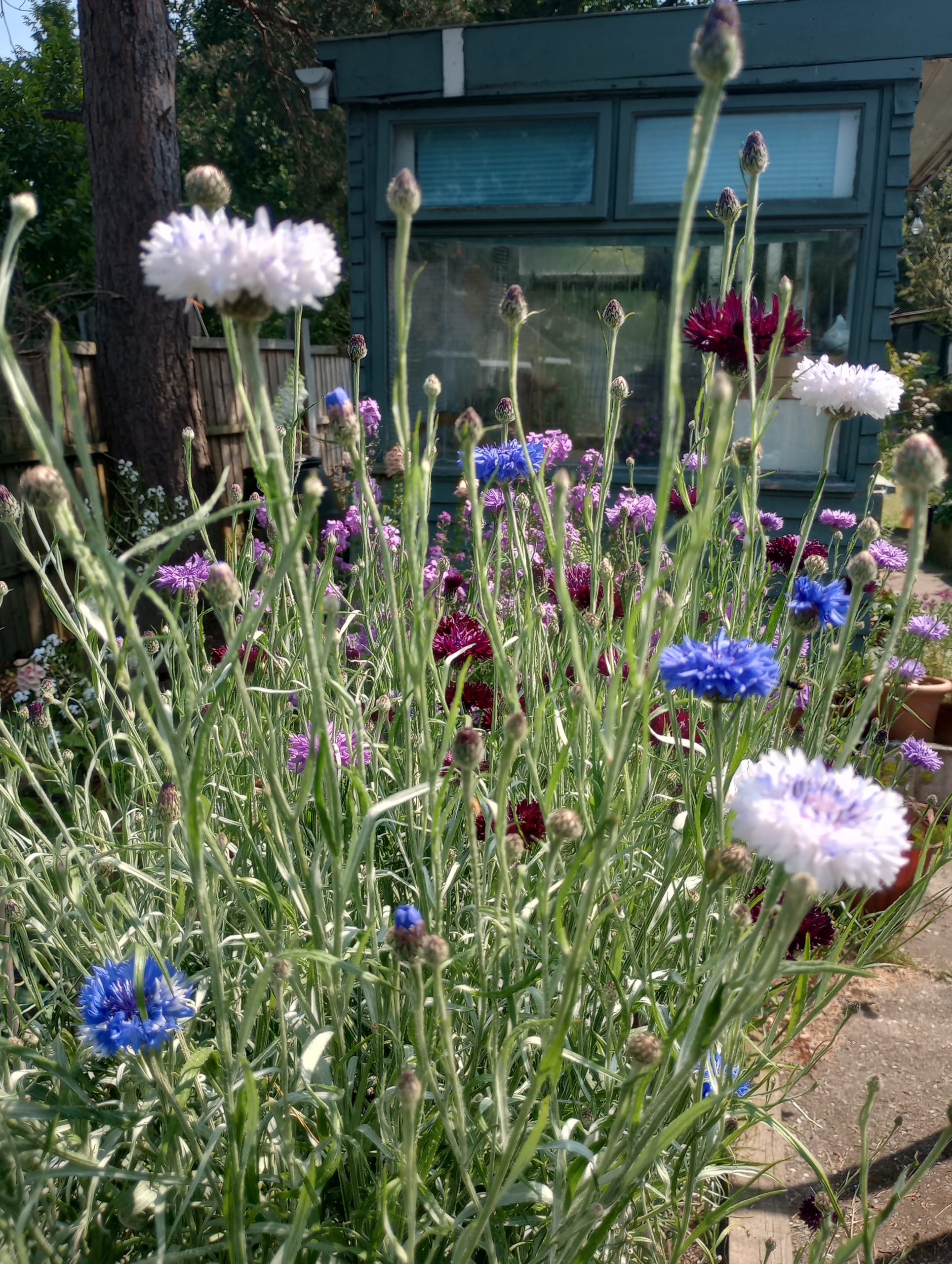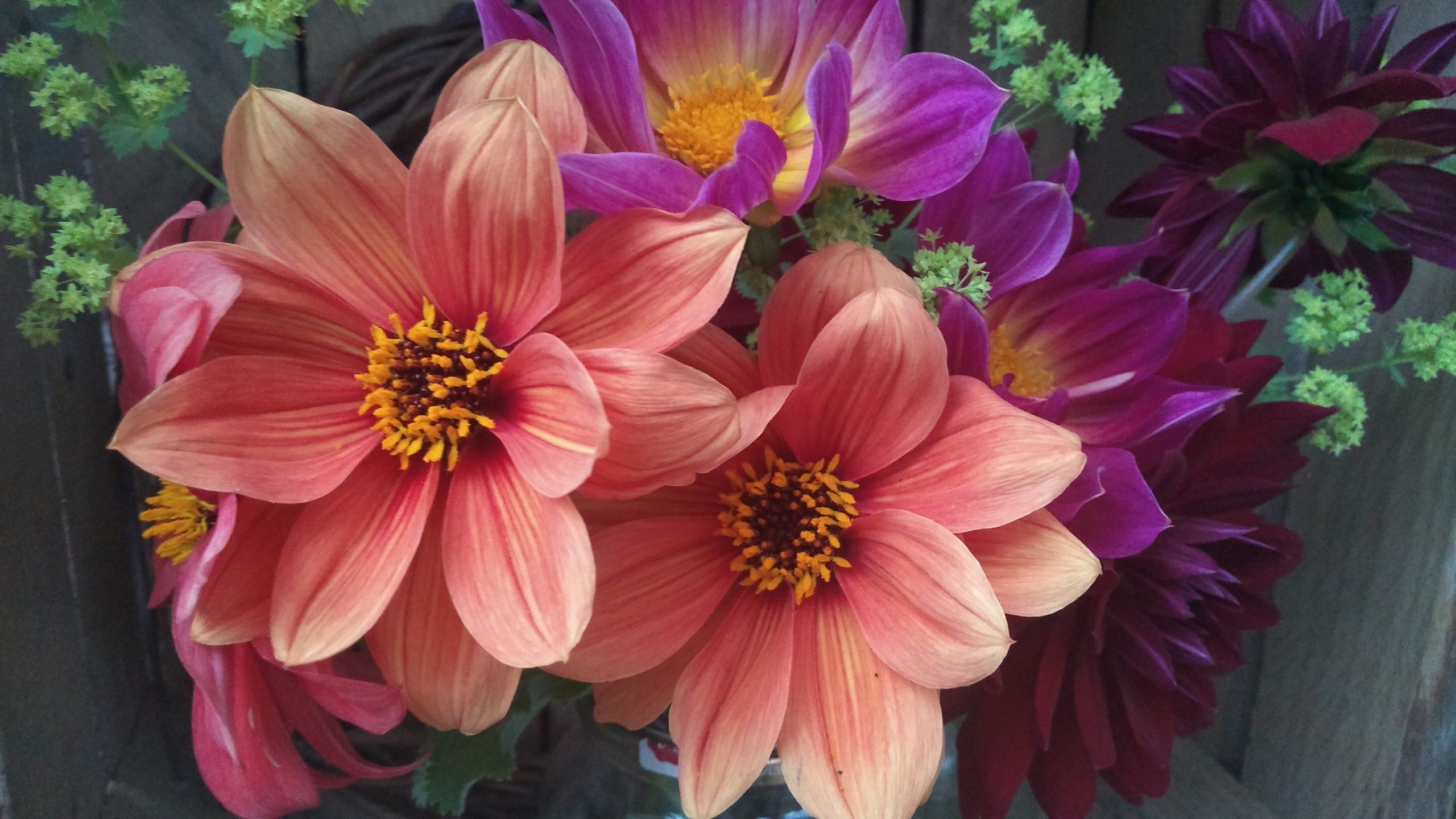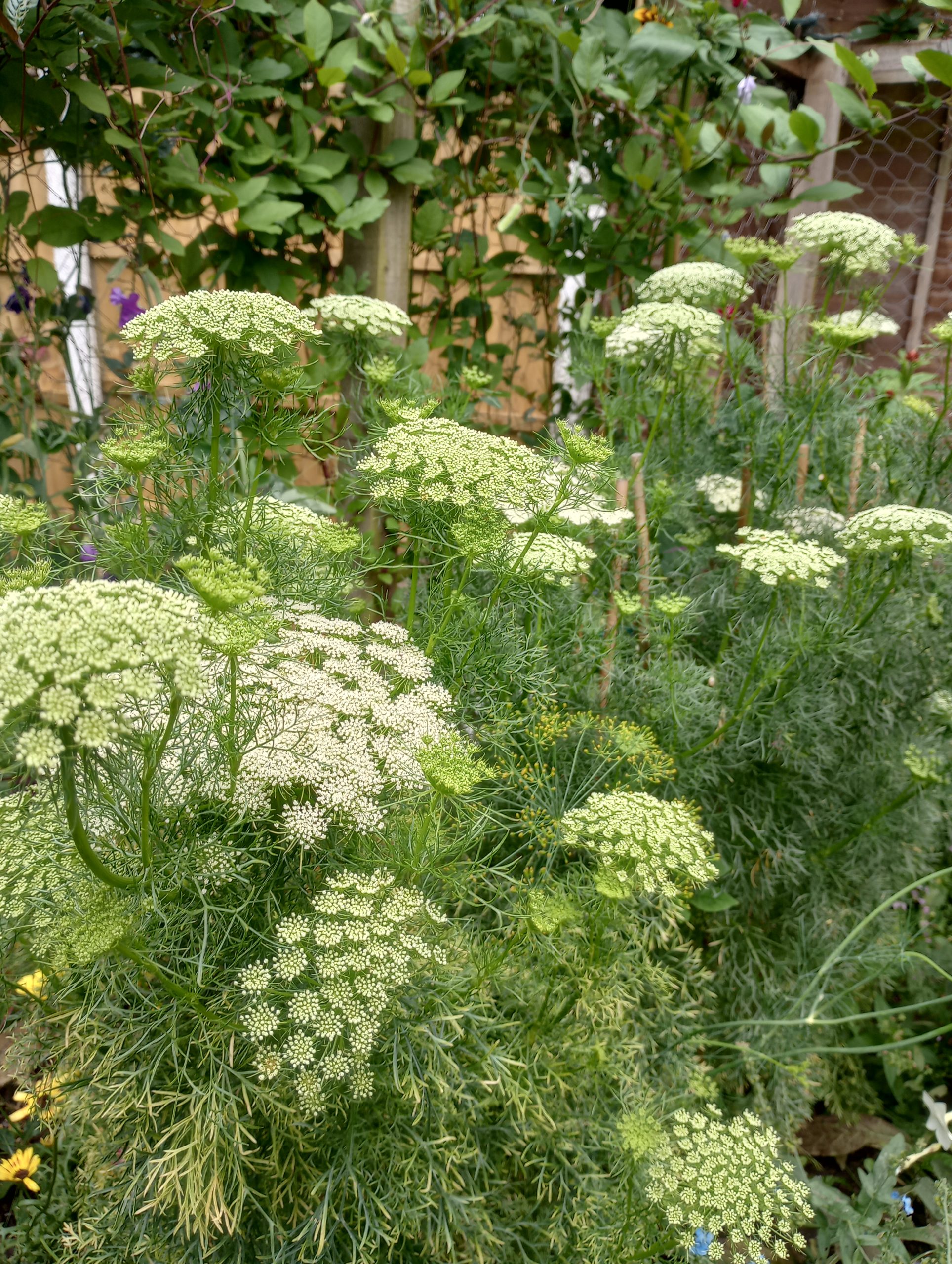Bee friendly flowers for your garden and cutting patch
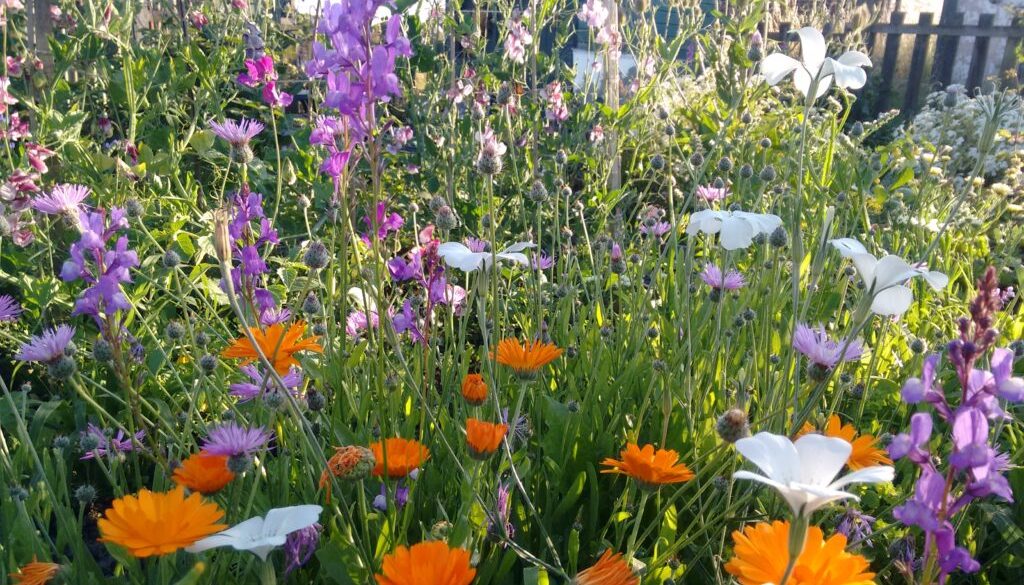
Many of the seeds that we sell at Higgledy garden we recommend as they make great cut flowers, so we are always looking for varieties that have a good vase life, have nice long stems and have a range of flower shapes and textures and that is often much of the focus of my blogs. However I’m also keen to encourage wildlife into my garden and I love to grow lots of flowers for bees and other insects. I love the sound of bees buzzing while I’m pottering round the garden. I’m looking forward to hearing that sound again after a what feels like a long cold winter, who doesn’t get excited by that first sighting of a bee and I always make sure I have some early flowers in my garden that will give them a bit of nectar, especially Pulmonarias, Hellebores and Crocuses. I’m certainly no expert on bees but I do try and take time in the spring and summer and look at some of the different types, there are 26 different species of bumblebees and you may find at least 6 in your gardens. I really recommend reading some of Dave Goulson’s books especially Gardening for Bumblebees which will explain more about the plight of our bees and what we can all do to help. He’s got some great guides for how to identify the different types of bumblebees and other solitary bees to be found in your gardens and also other pollinators such as Hoverflies, Wasps, Beetles, Butterflies and Moths. He also discusses some of the plants that you can grow in your garden to encourage them, many of them can be grown from seed and that we sell here at Higgledy Garden.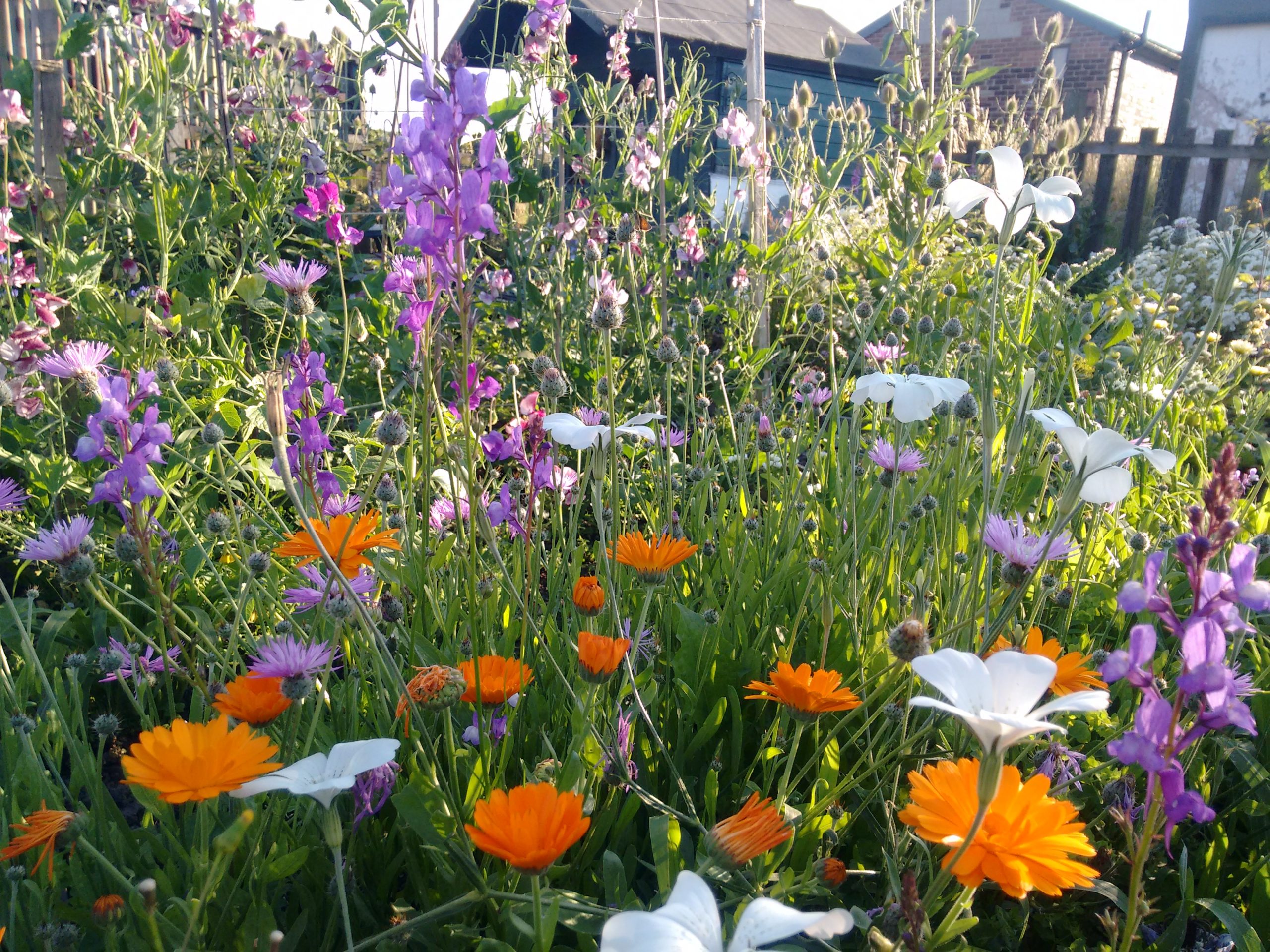 Here are some of my favourites. See the Higgledy Seed Sowing guide for more detailed sowing information for these varieties.
Here are some of my favourites. See the Higgledy Seed Sowing guide for more detailed sowing information for these varieties.
Borage is not just that blue flower that you get in your Pimms or summer salads, its so much more than that and I think one of the best flowers for nectar for bees. Its very easy to grow from seed and will thrive best in a sunny site but can cope with some shade. Once you have sown it once it will often self seed but they are easy to dig up so never really cause a problem. It produces prodigous amounts of nectar (topping itself up every two minutes) and flowers for months. The star-like flowers are edible, probably one of the most beautiful of the edible flowers with its dark black stamens.The plant can grow up to 1m tall when really happy and may need some support. March is a good time to sow these if you want to sow undercover or wait till April and they are really easy to sow directly into your bed and borders.
 Cerinthe, another from the Borage family, and is another prodigous nectar producer hence its common name of Honeywort. Its one plant in my cutting patch that I know will be humming with the sound of bees in the summer. Beautiful glaucous blue foliage with purpley blue flowers with a white tip. Again this is easy from seed and I’ve sown some in the autumn that I’m hoping will flower a bit earlier but I’m also planning on sowing some more in March to create a bit of succession. The dark black seed can be sown directly or into 9cm pots in a greenhouse or on a windowsill. It may seed also around but its also easy to collect seed from for next year. Its a wonderful foliage flower to use in your arrangements.
Cerinthe, another from the Borage family, and is another prodigous nectar producer hence its common name of Honeywort. Its one plant in my cutting patch that I know will be humming with the sound of bees in the summer. Beautiful glaucous blue foliage with purpley blue flowers with a white tip. Again this is easy from seed and I’ve sown some in the autumn that I’m hoping will flower a bit earlier but I’m also planning on sowing some more in March to create a bit of succession. The dark black seed can be sown directly or into 9cm pots in a greenhouse or on a windowsill. It may seed also around but its also easy to collect seed from for next year. Its a wonderful foliage flower to use in your arrangements.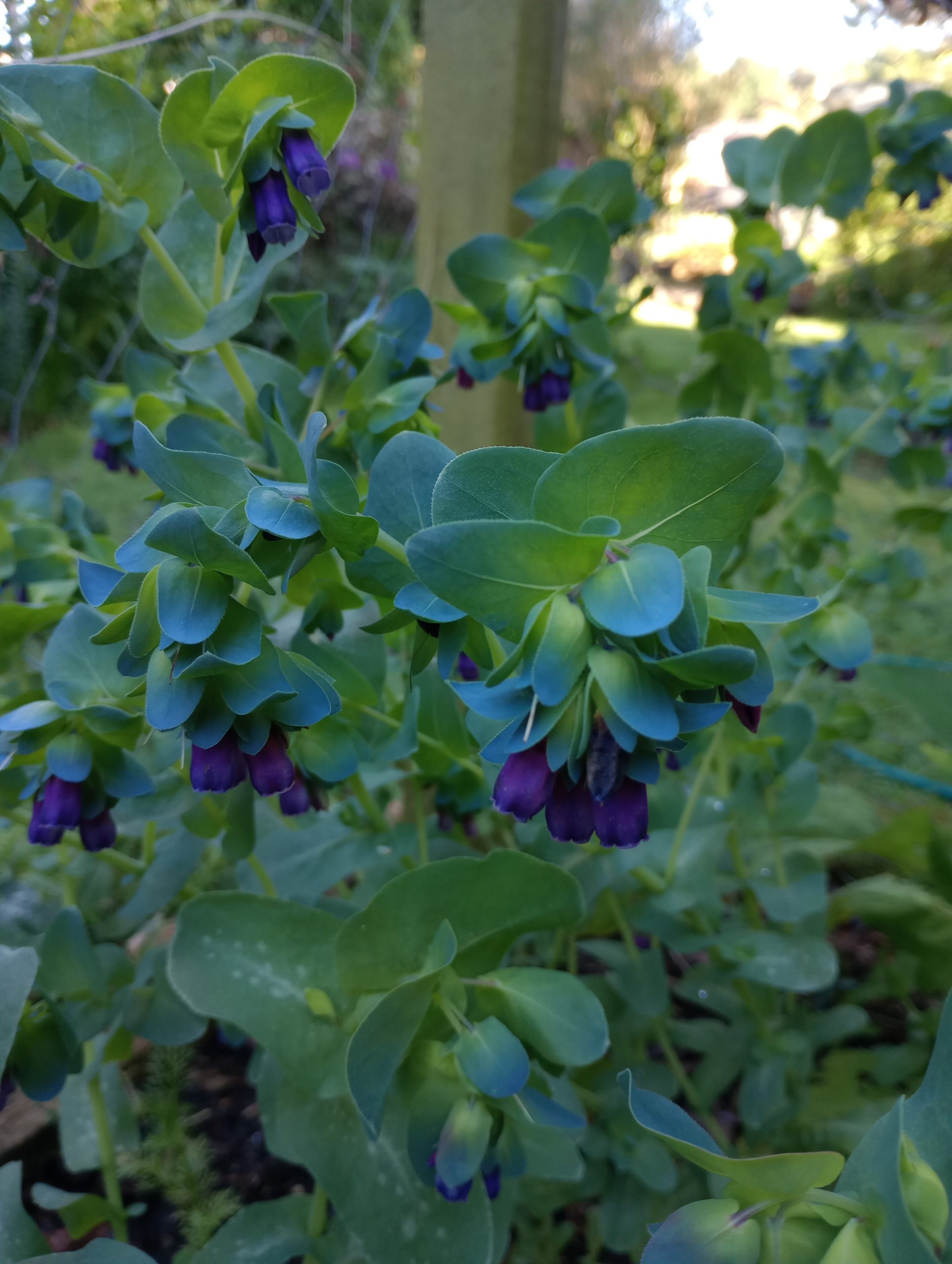 Here it is on my old allotment mingling with some Chives (also loved by bees!).
Here it is on my old allotment mingling with some Chives (also loved by bees!).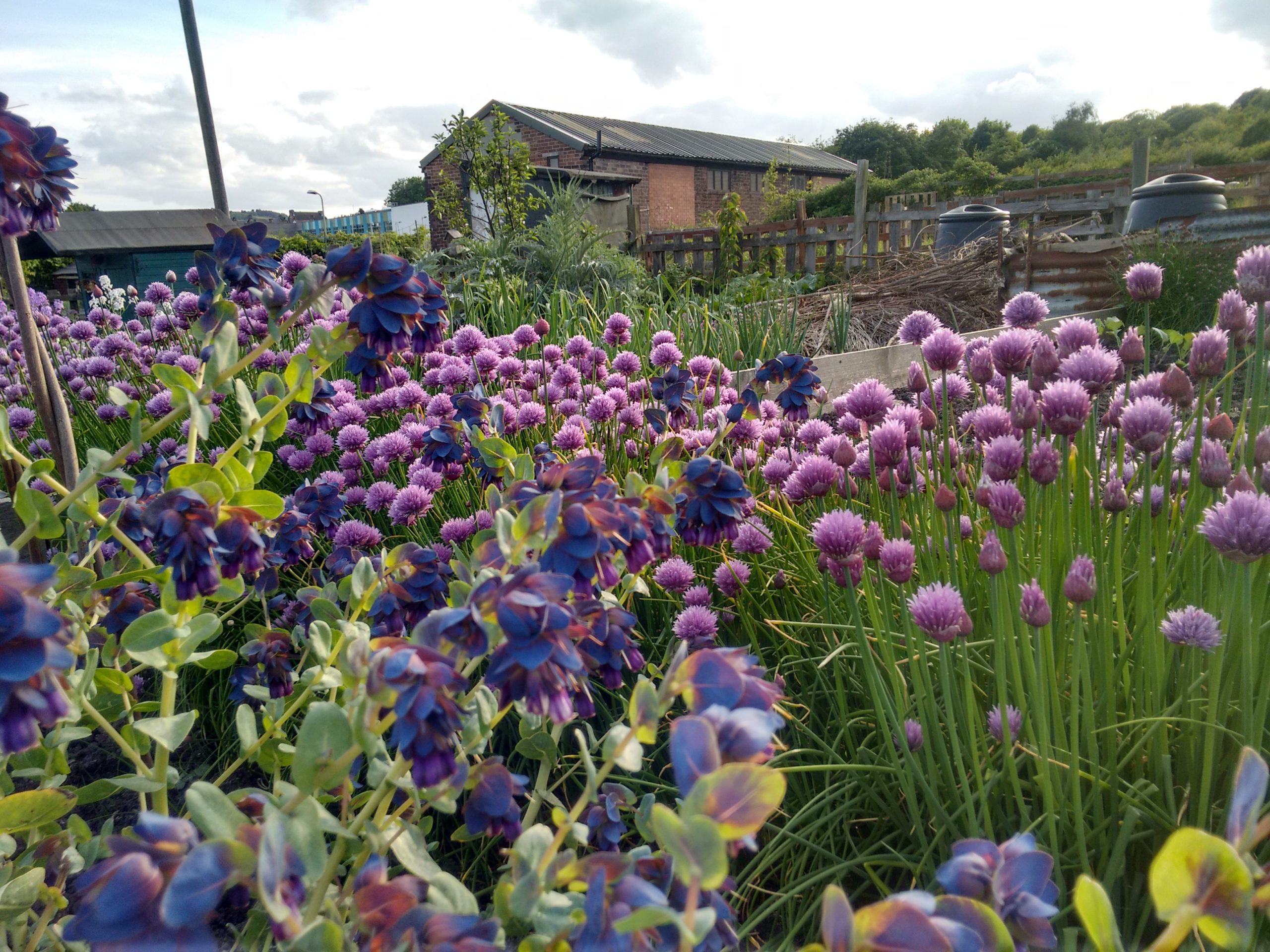 Two other members of the Borage family that are worth growing are Echium ‘Blue Bedder’ and Phacelia. Echium is a good one to sow in March and the bees will thank you for it. The plants prefer a sunny spot with good drainage and can seed around if happy. The flowers fade to a pinky colour and its another hairy leaved plant. I also use it as a filler in my arrangements but I grow it more for the bees. The white form is also loved by bees too.
Two other members of the Borage family that are worth growing are Echium ‘Blue Bedder’ and Phacelia. Echium is a good one to sow in March and the bees will thank you for it. The plants prefer a sunny spot with good drainage and can seed around if happy. The flowers fade to a pinky colour and its another hairy leaved plant. I also use it as a filler in my arrangements but I grow it more for the bees. The white form is also loved by bees too. 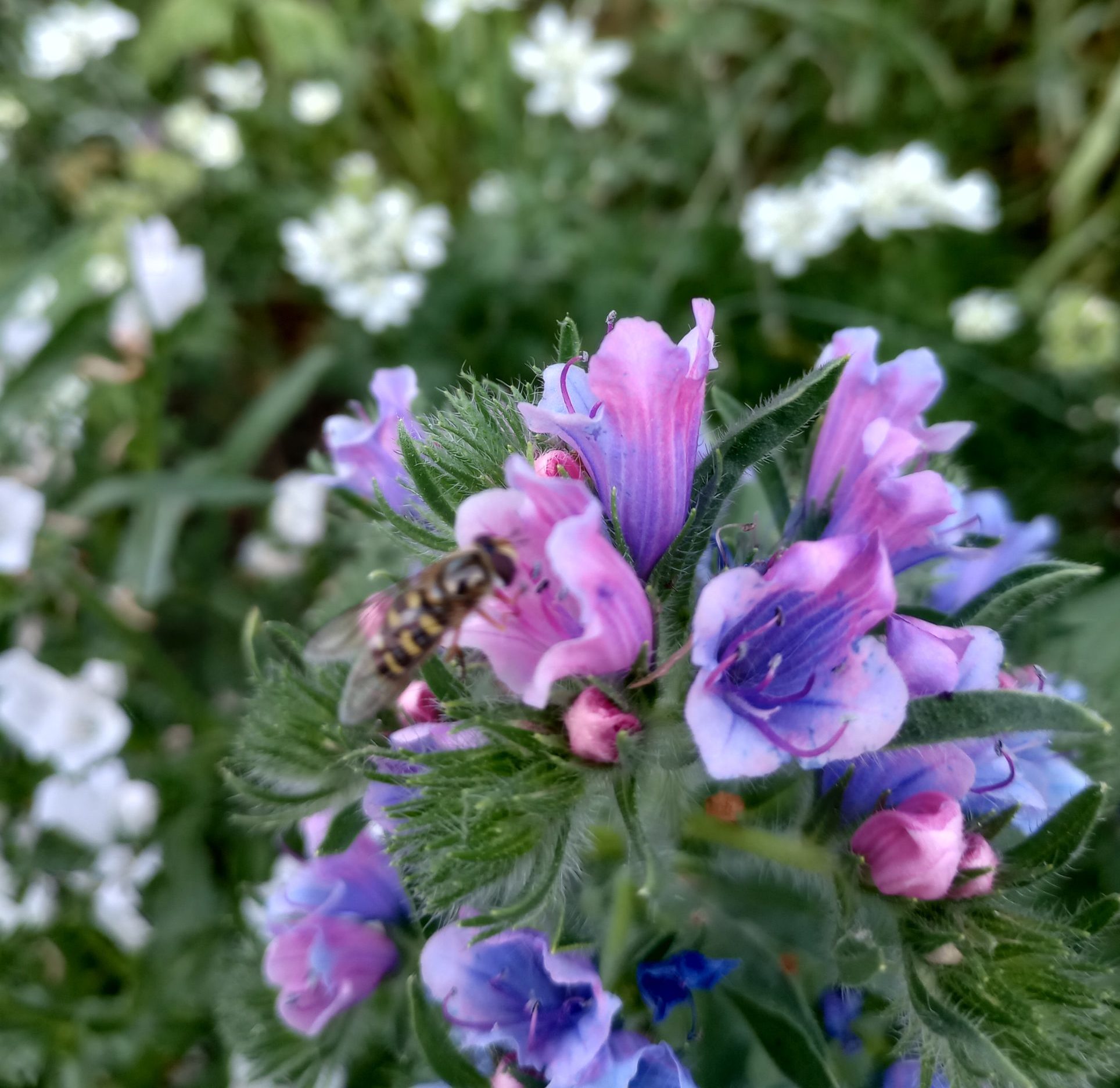
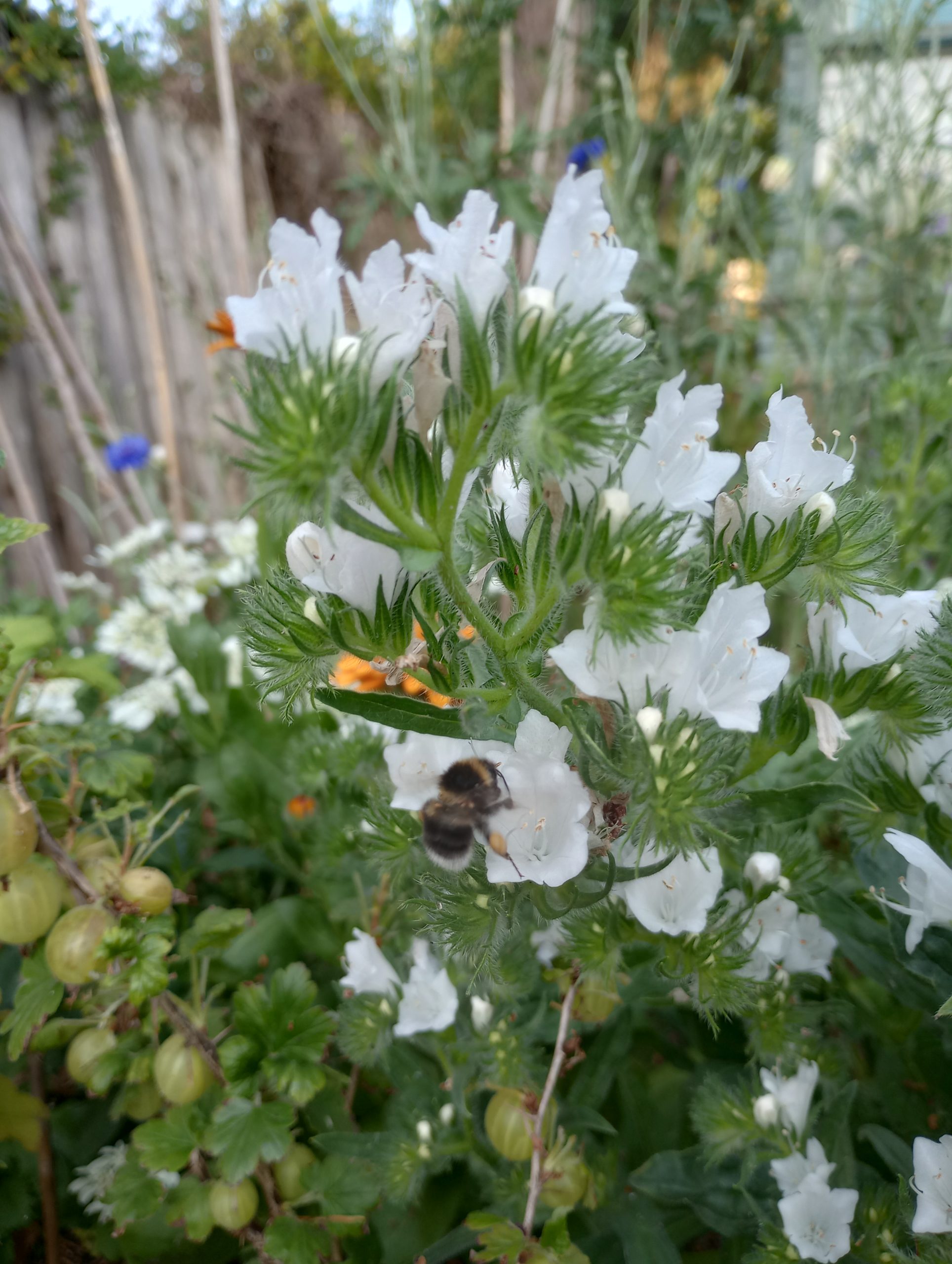 Phacelia is super speedy from sowing to flower and is a really good one for direct sowing, good to sow into weed-free good cultivated soil in March or April and you will soon have those lovely unusual flowers in pale blue. Its loved not only be bees, but hoveflies and wasps. You can use it as a green manure but its best to dig it back into the soil before it flowers, helps improve soils structure. It’s surprisingly long flowering as a cut flower and has a delicate scent.
Phacelia is super speedy from sowing to flower and is a really good one for direct sowing, good to sow into weed-free good cultivated soil in March or April and you will soon have those lovely unusual flowers in pale blue. Its loved not only be bees, but hoveflies and wasps. You can use it as a green manure but its best to dig it back into the soil before it flowers, helps improve soils structure. It’s surprisingly long flowering as a cut flower and has a delicate scent. 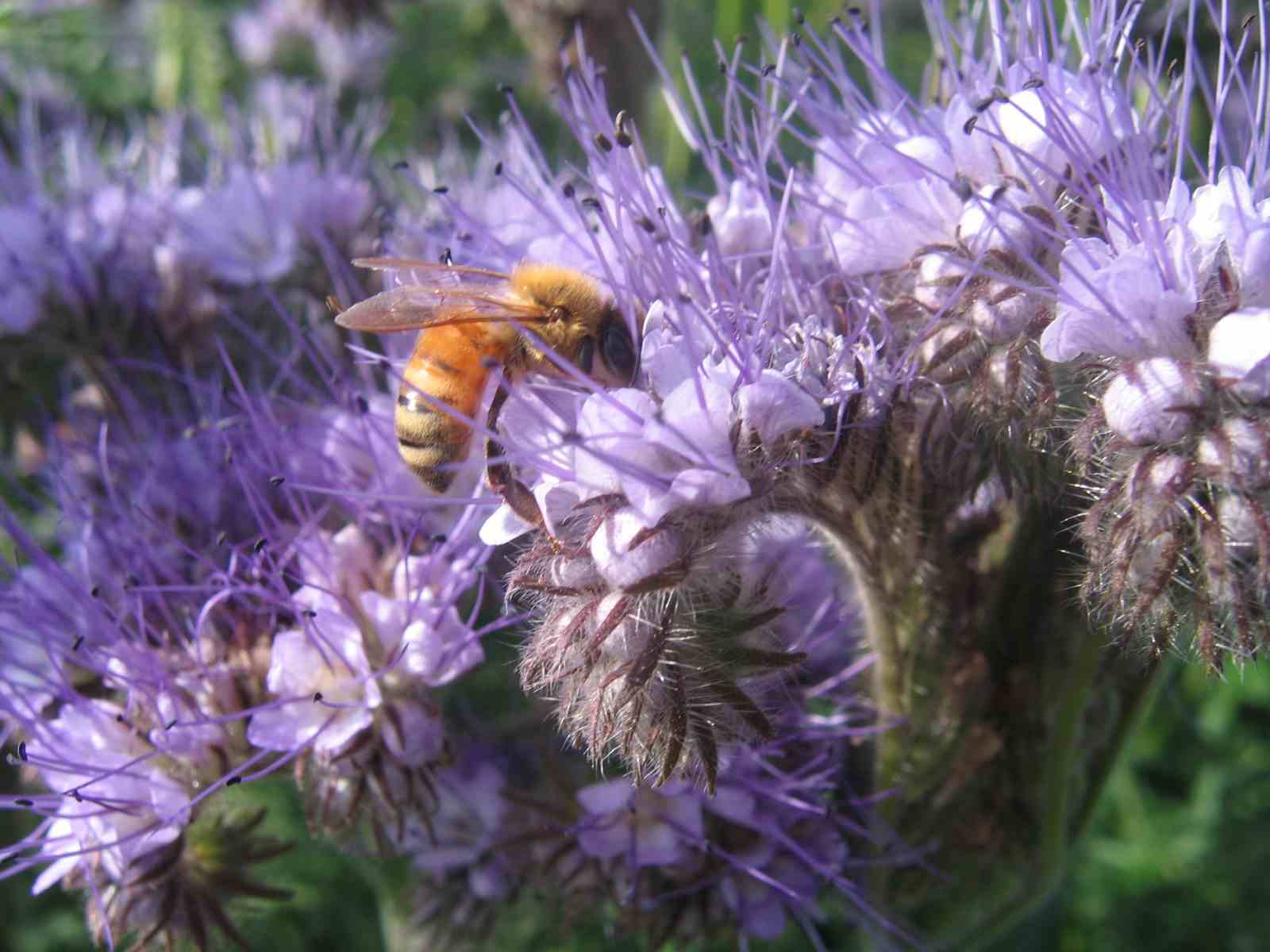 Foxgloves, another must have for a bee-friendly garden, and we sell them in shades of white, Digitalis ‘Alba’ and Apricot, Digitalis ‘Apricot’ but I still think my favourite is the purple form. Foxglove ‘Excelsior’ is mix of the pinks, purples, and whites. I just love those stately spires in my garden and that sound of the bee tucked into the flower buzzing away. They are biennials so seed is sown in May/June time for flowering the following year. Foxglove seed is tiny so surface sowing in a seed tray is a good idea and sow as thinly as you can. Once established in your garden they will seed around and you can dig them up and move them to their final places in the autumn or early spring. They are tough too and can grow in shade as well as sun.
Foxgloves, another must have for a bee-friendly garden, and we sell them in shades of white, Digitalis ‘Alba’ and Apricot, Digitalis ‘Apricot’ but I still think my favourite is the purple form. Foxglove ‘Excelsior’ is mix of the pinks, purples, and whites. I just love those stately spires in my garden and that sound of the bee tucked into the flower buzzing away. They are biennials so seed is sown in May/June time for flowering the following year. Foxglove seed is tiny so surface sowing in a seed tray is a good idea and sow as thinly as you can. Once established in your garden they will seed around and you can dig them up and move them to their final places in the autumn or early spring. They are tough too and can grow in shade as well as sun.
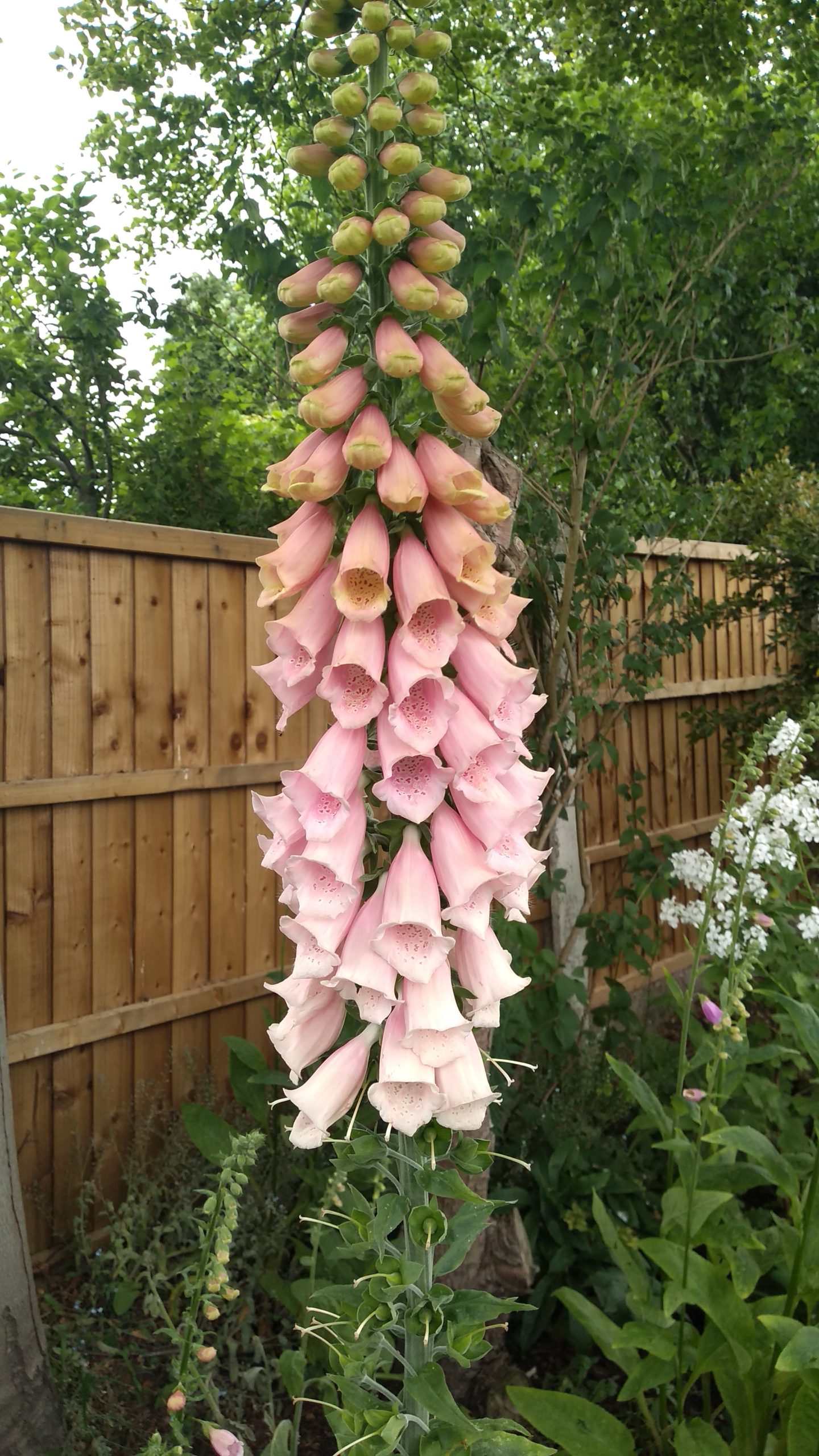

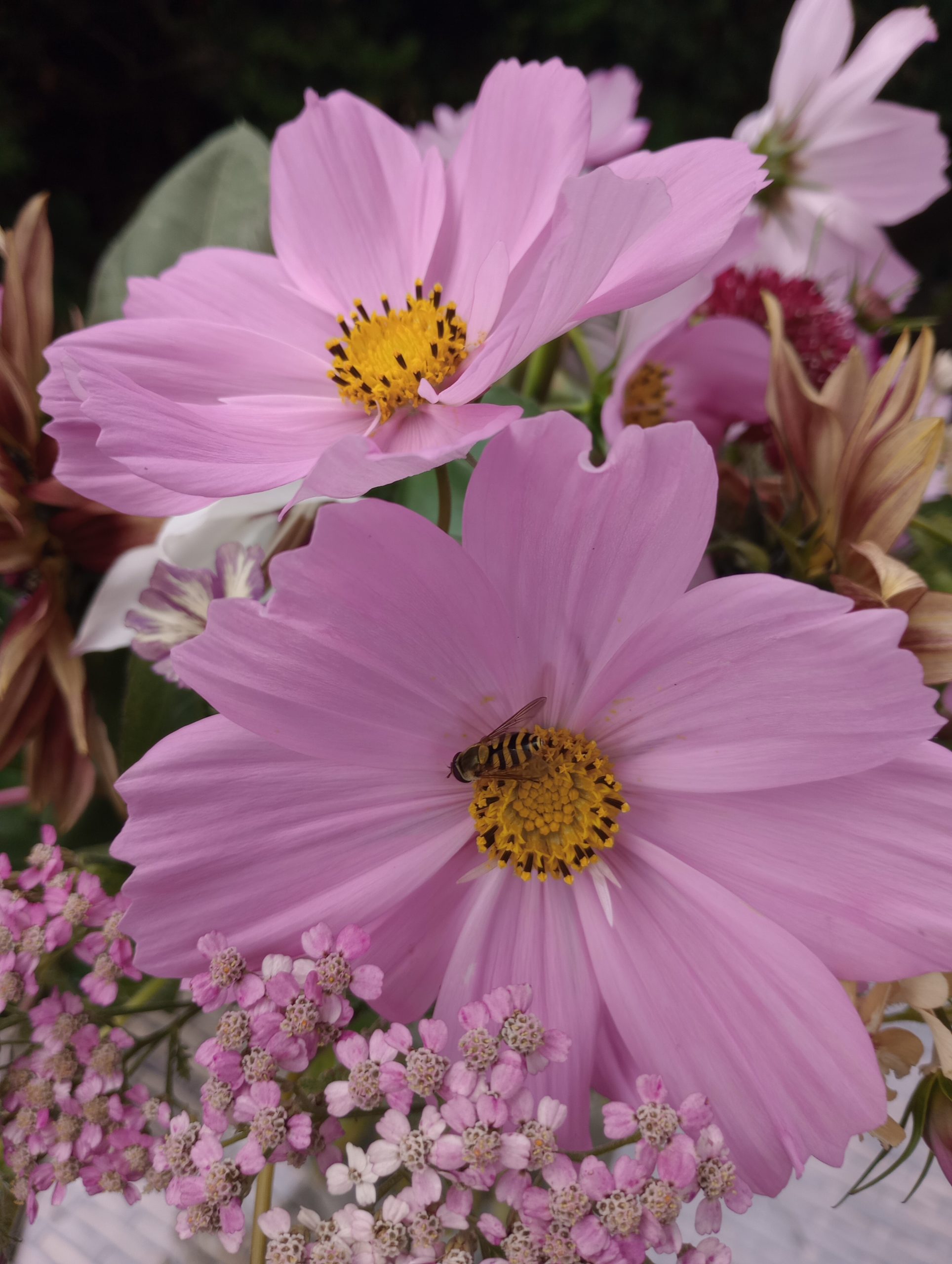

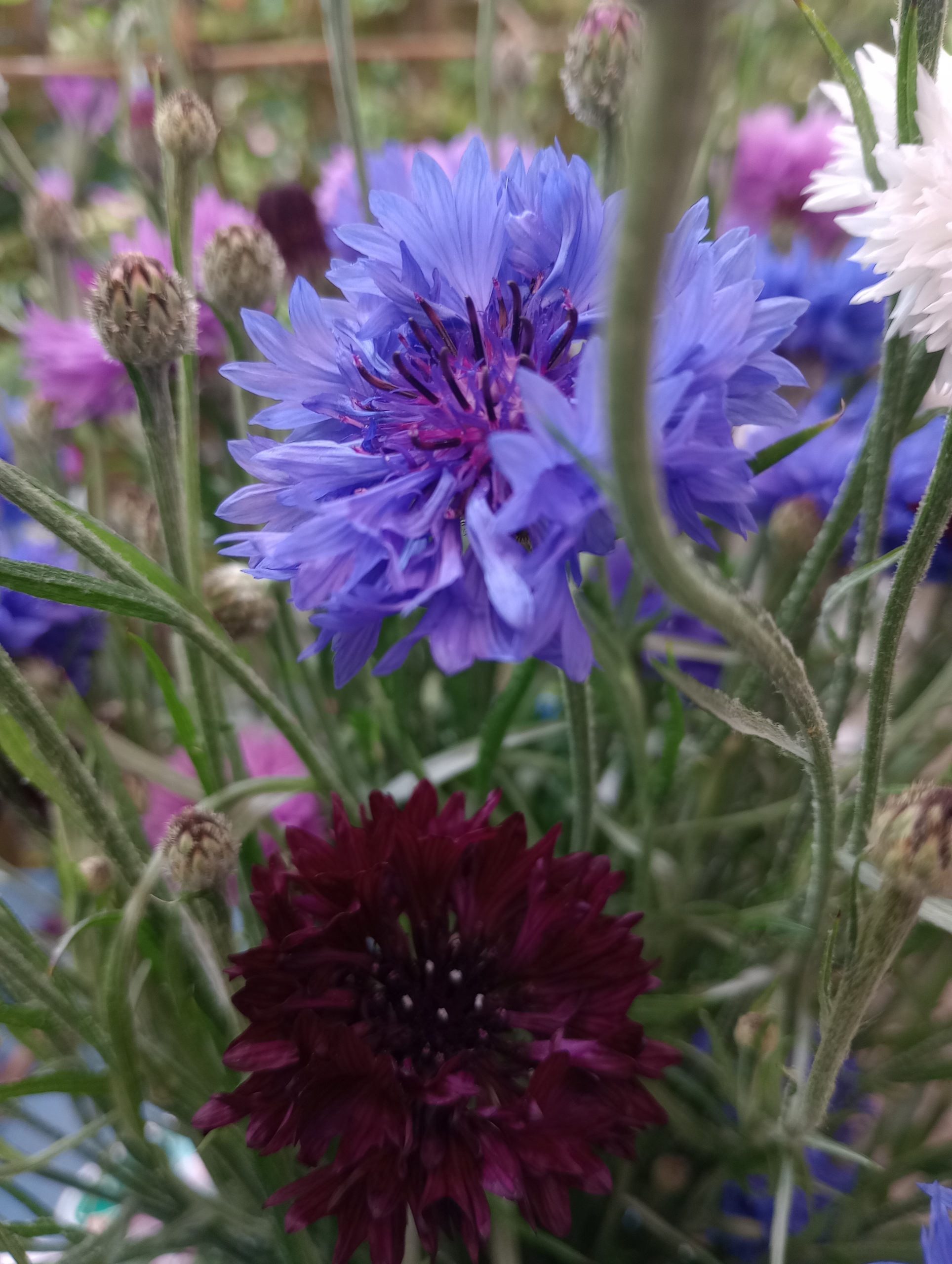

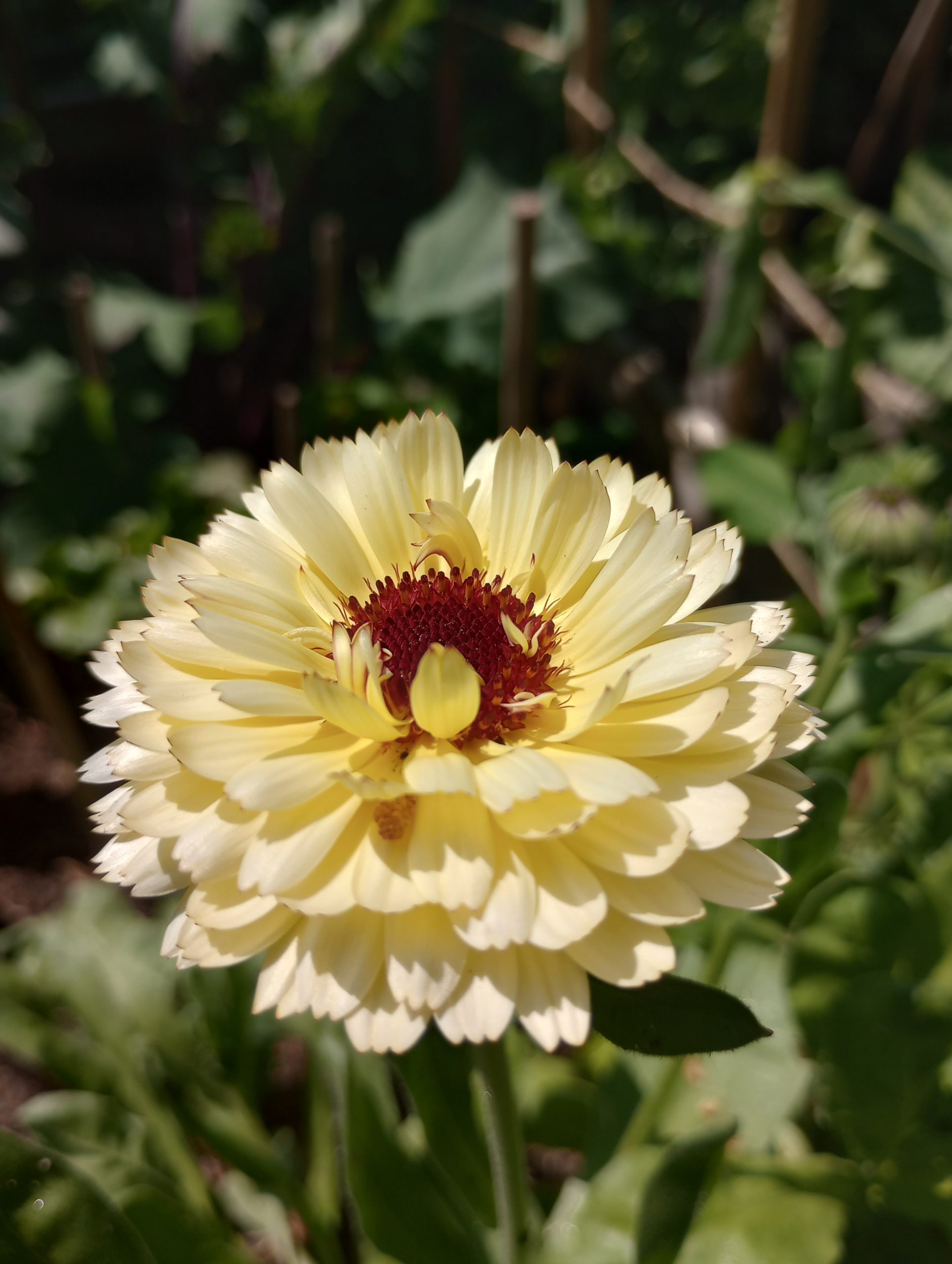


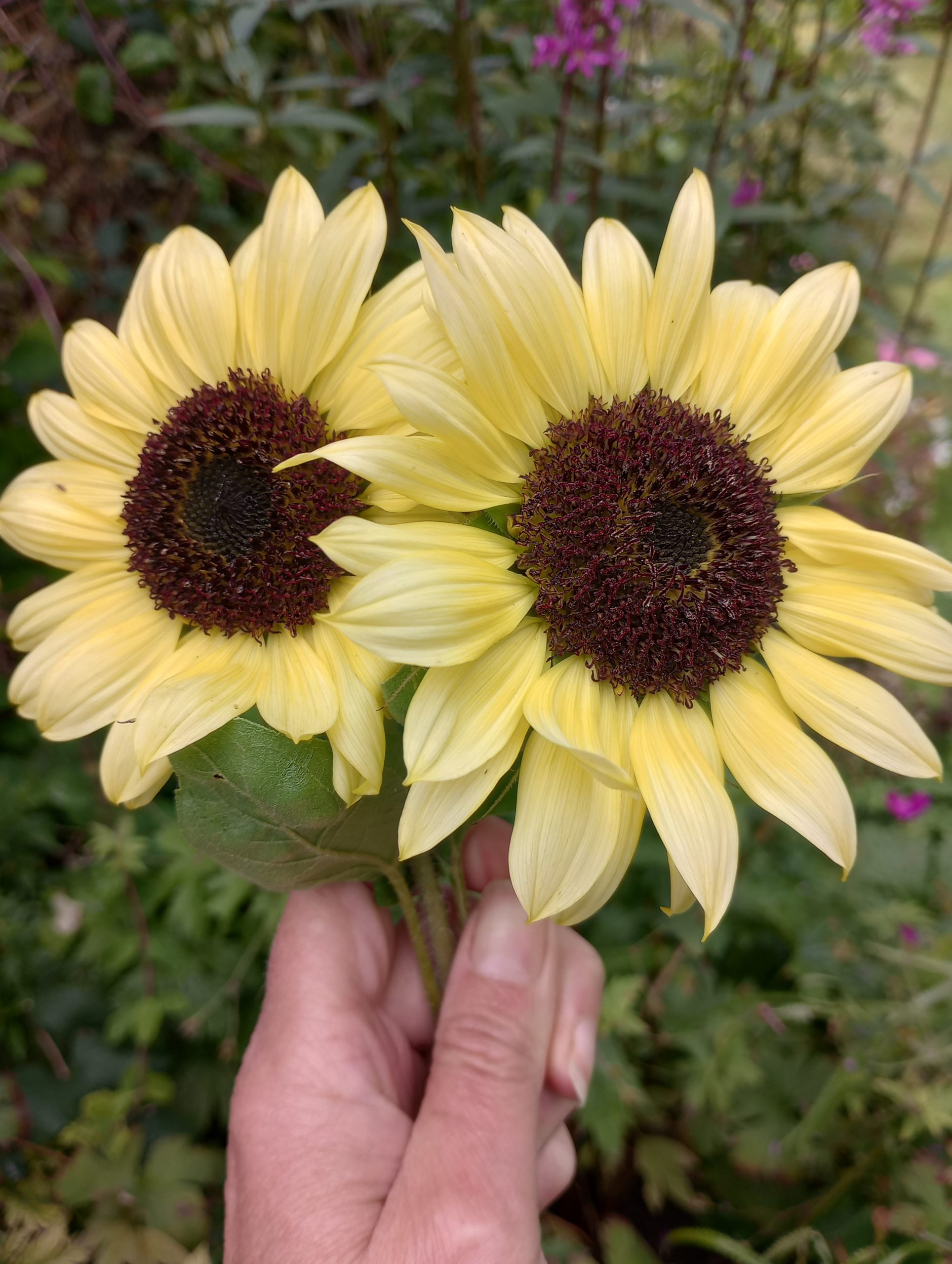
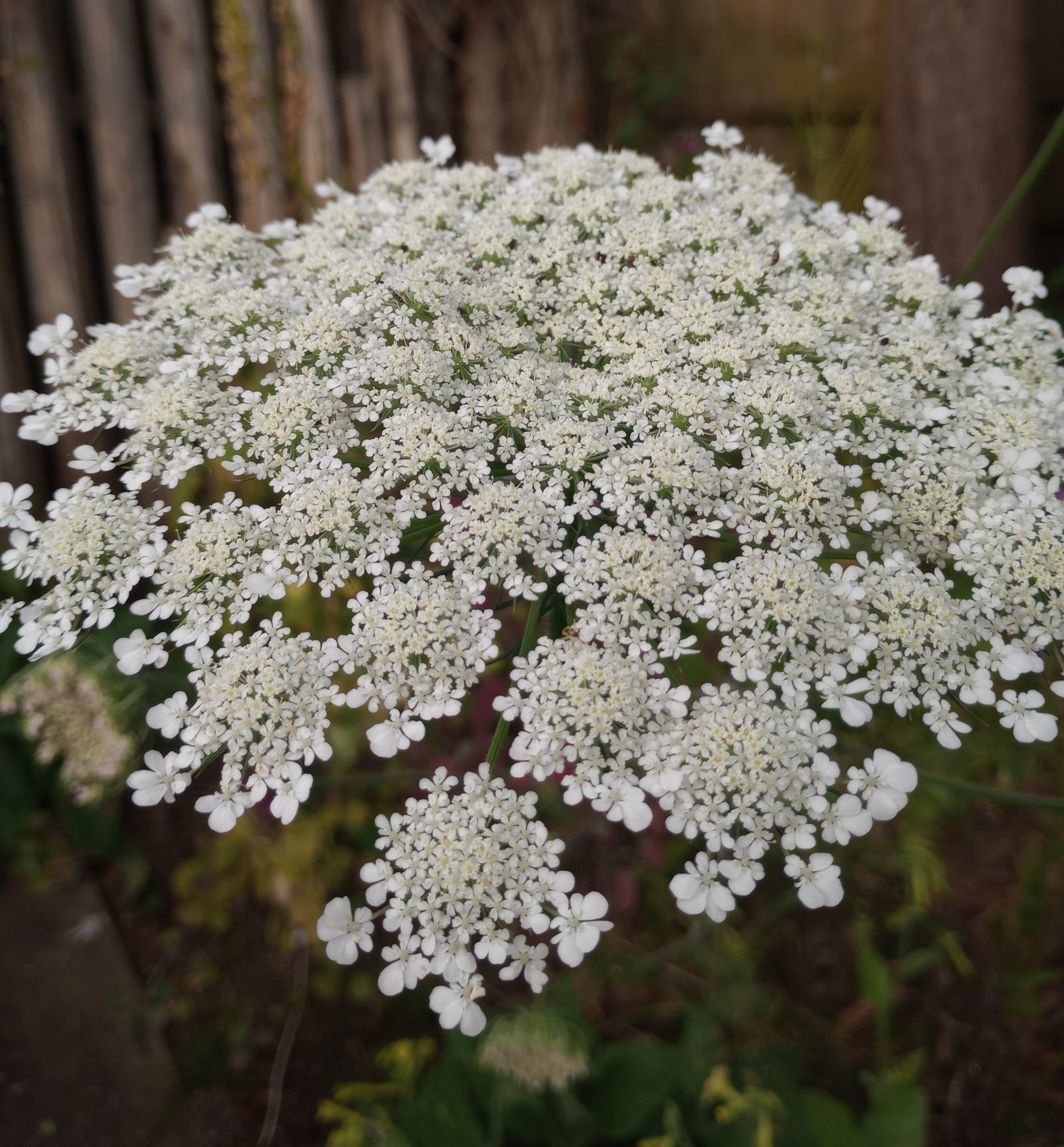
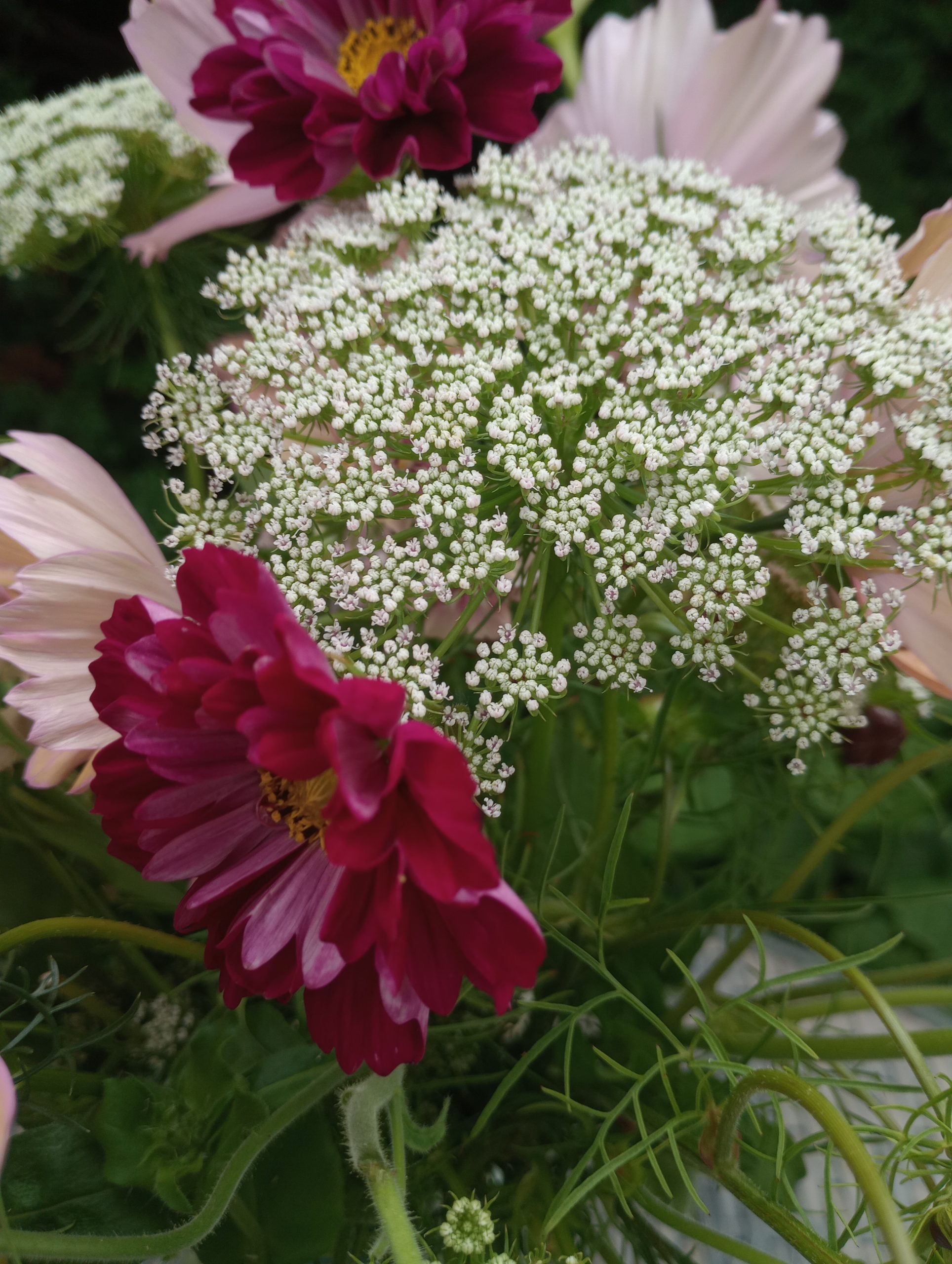

Wishing you a flower (and bee) filled summer.
Higgledy Anne
(I’m on Instagram anne_hinks if you fancy a follow, I’ve also joined Bluesky Anne Hinks)
